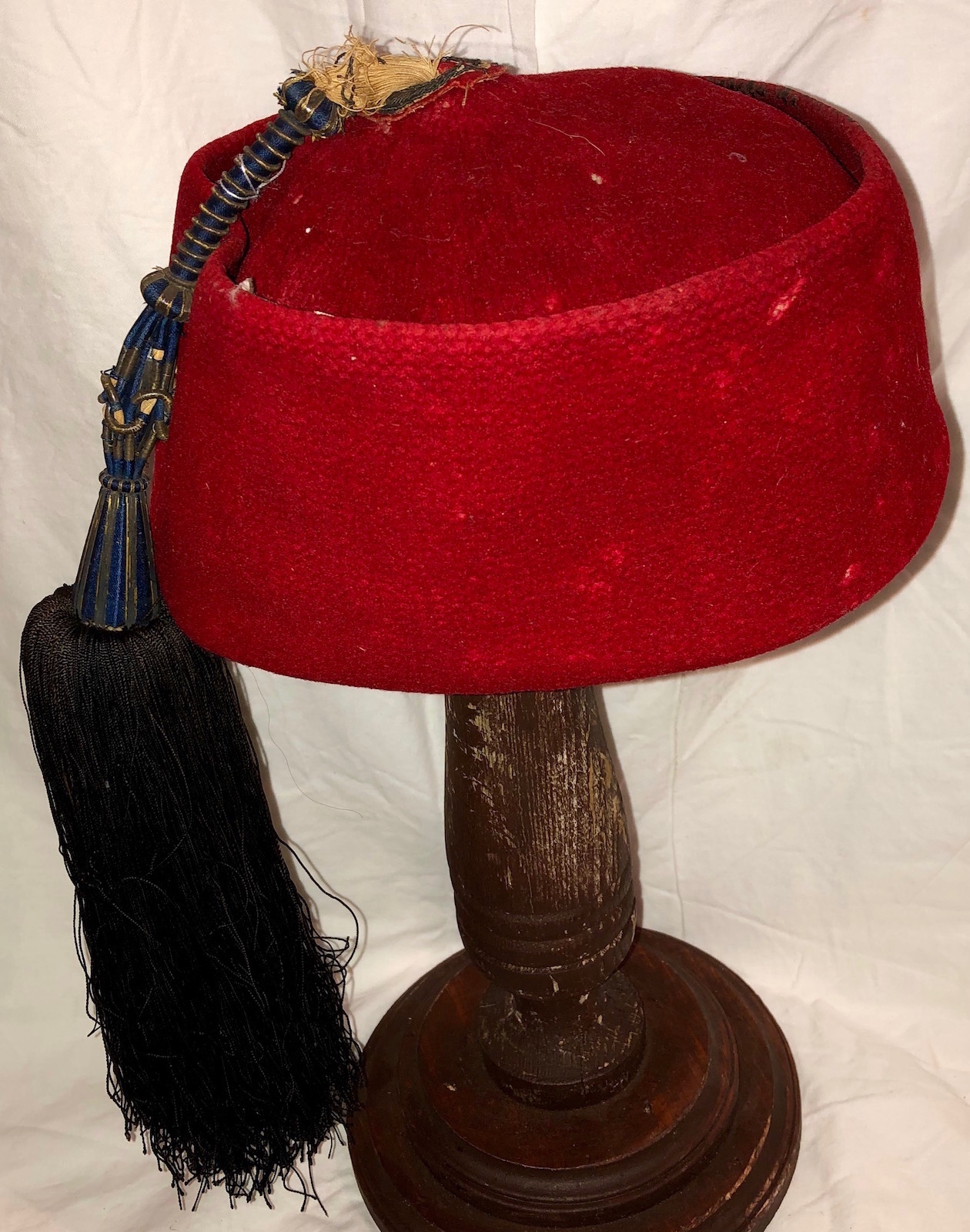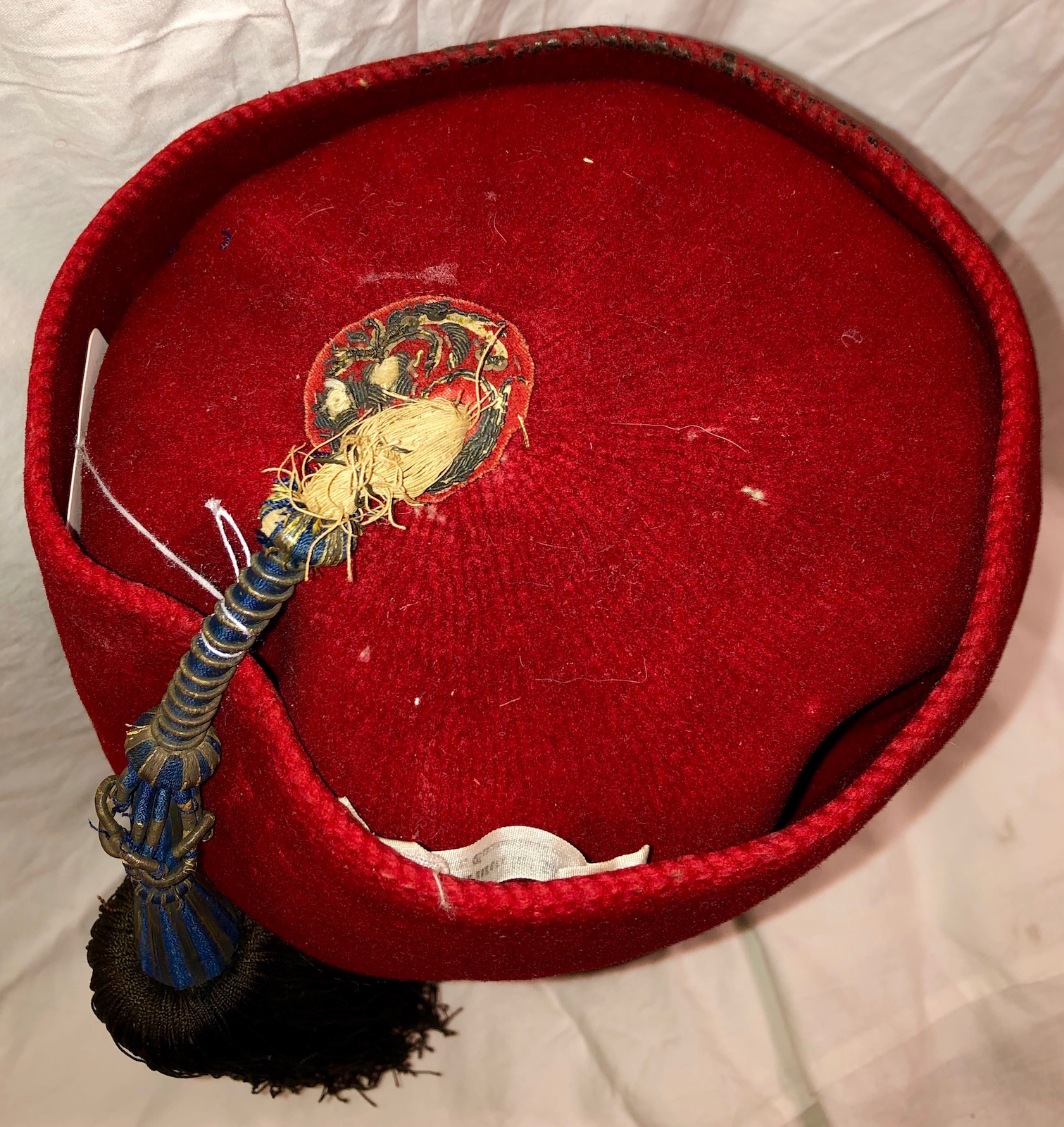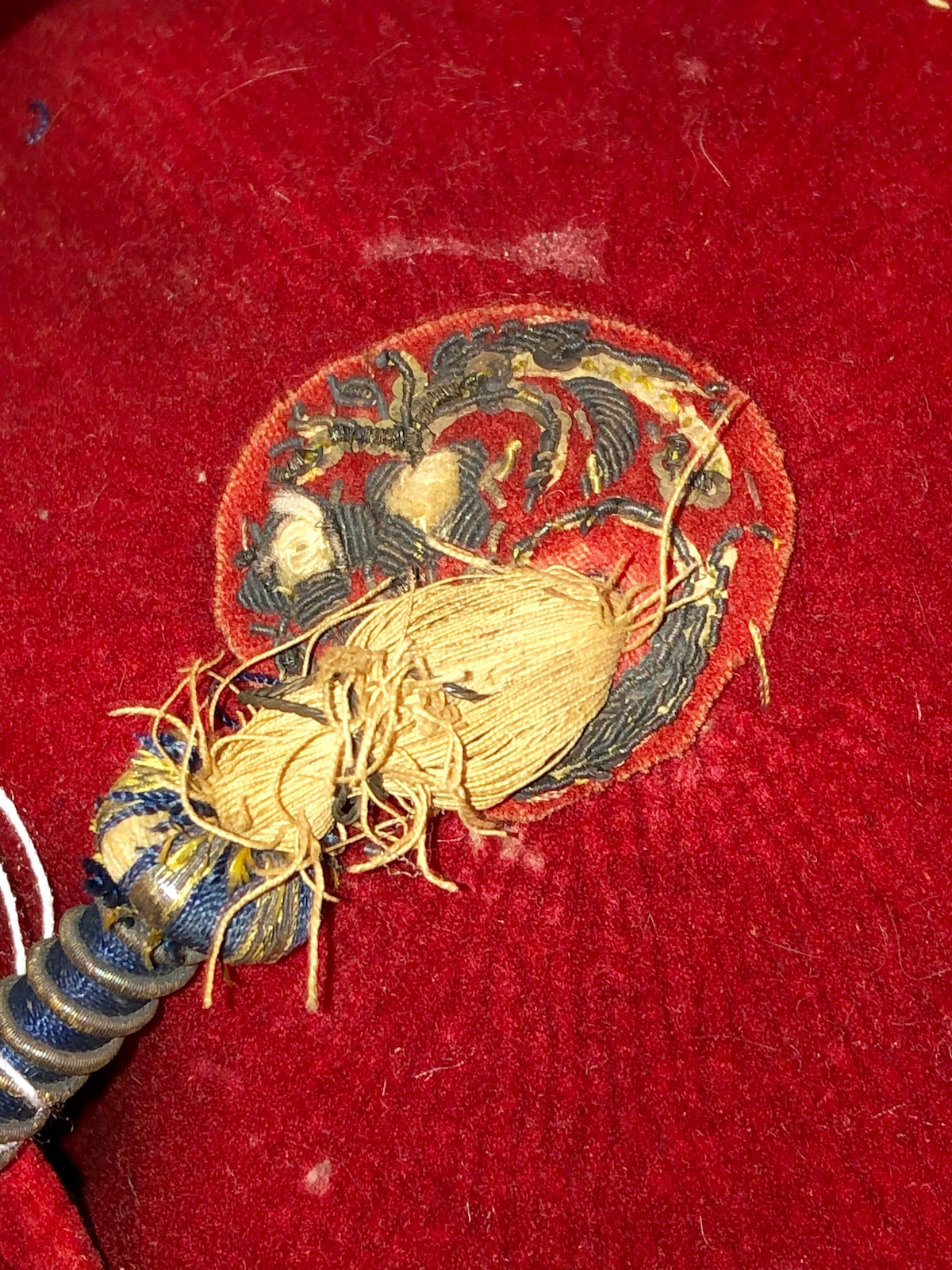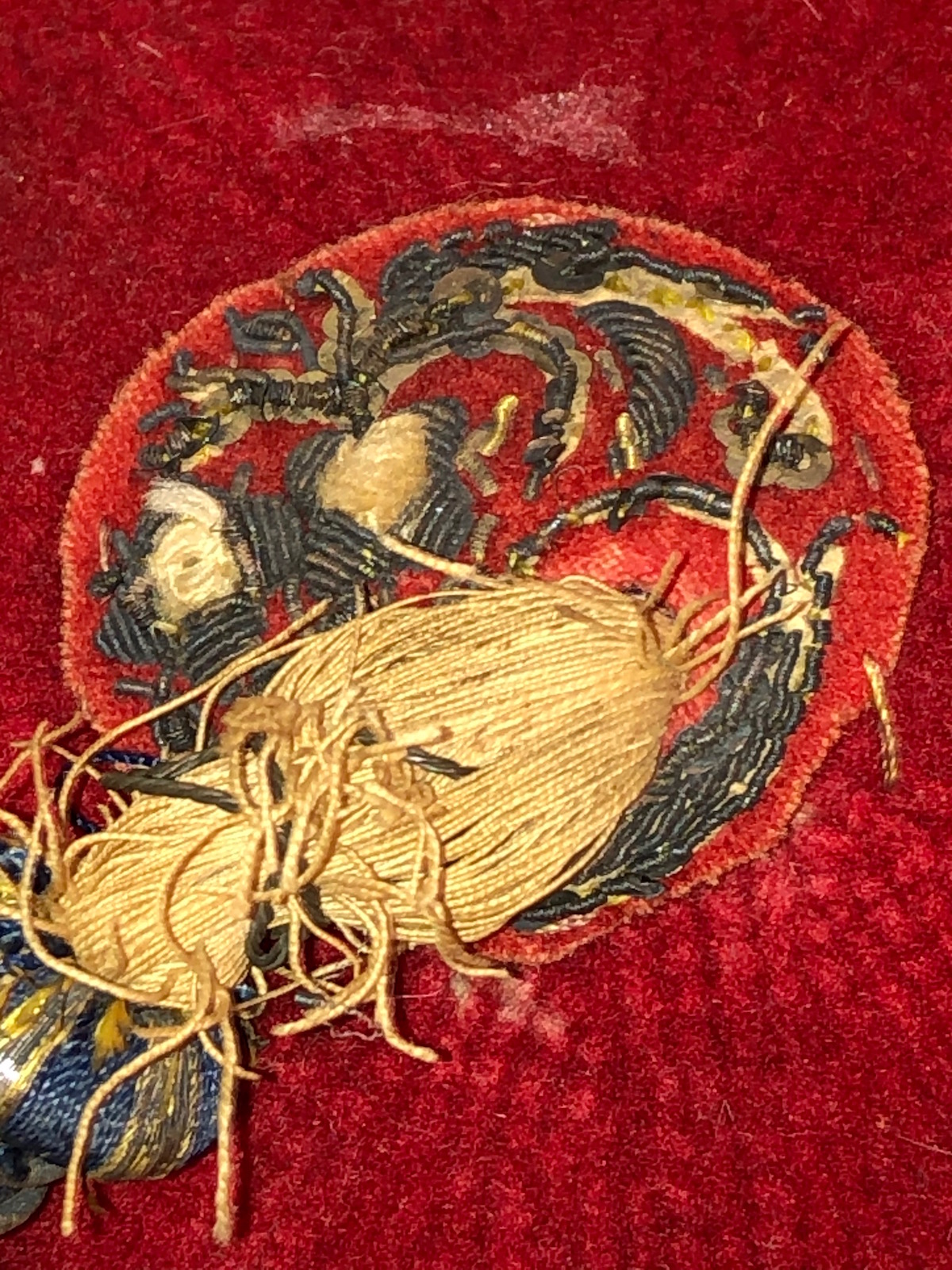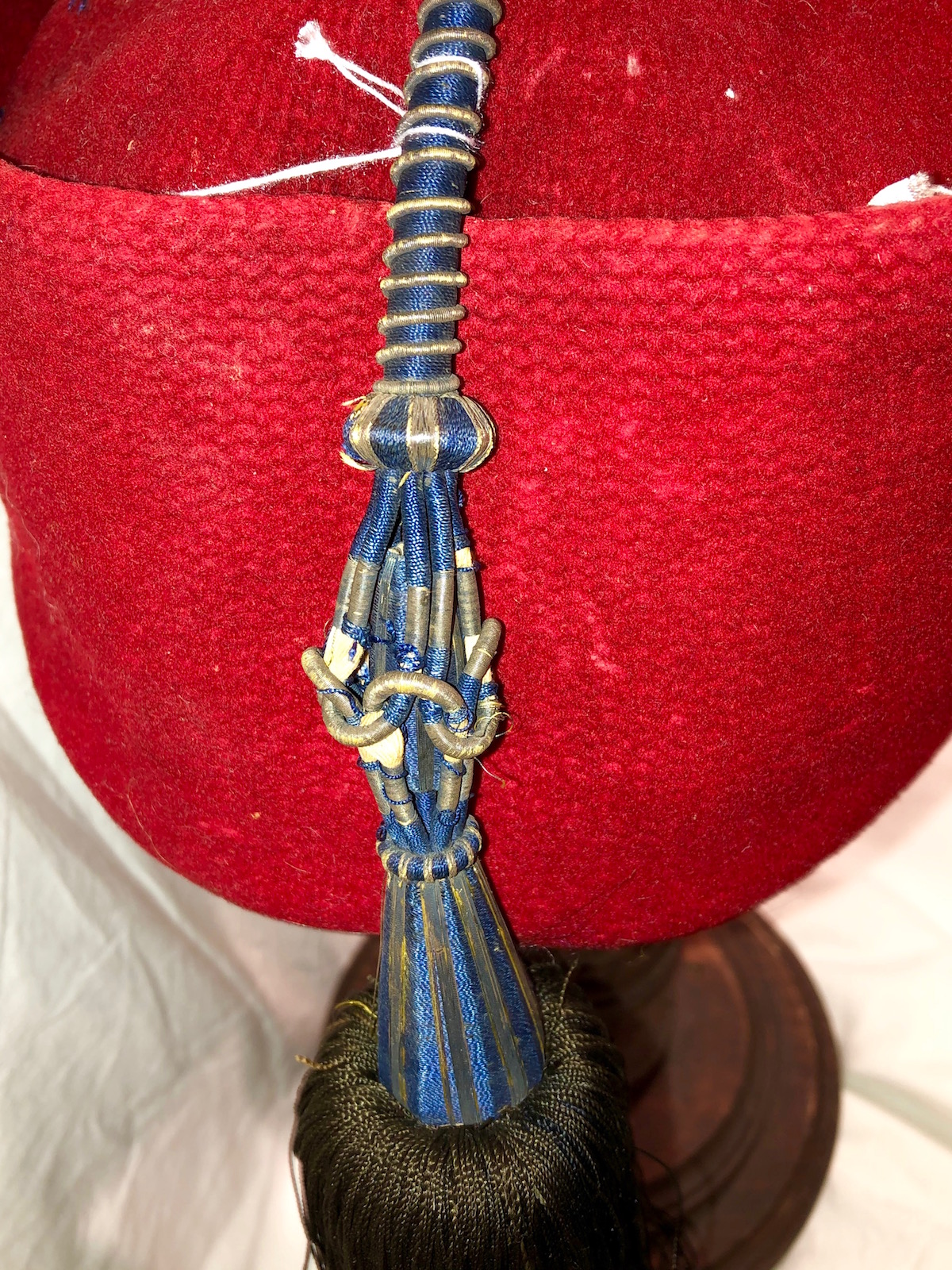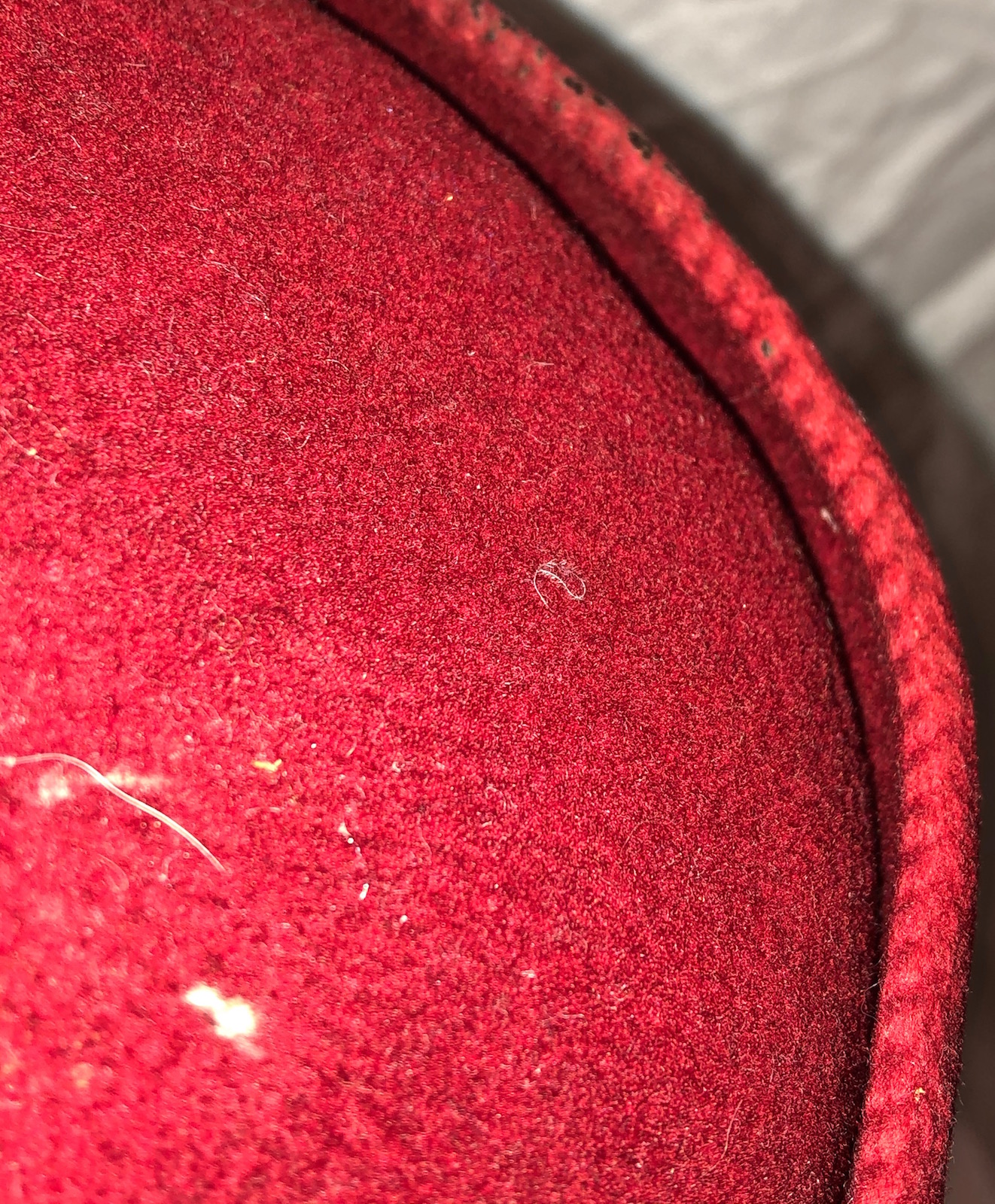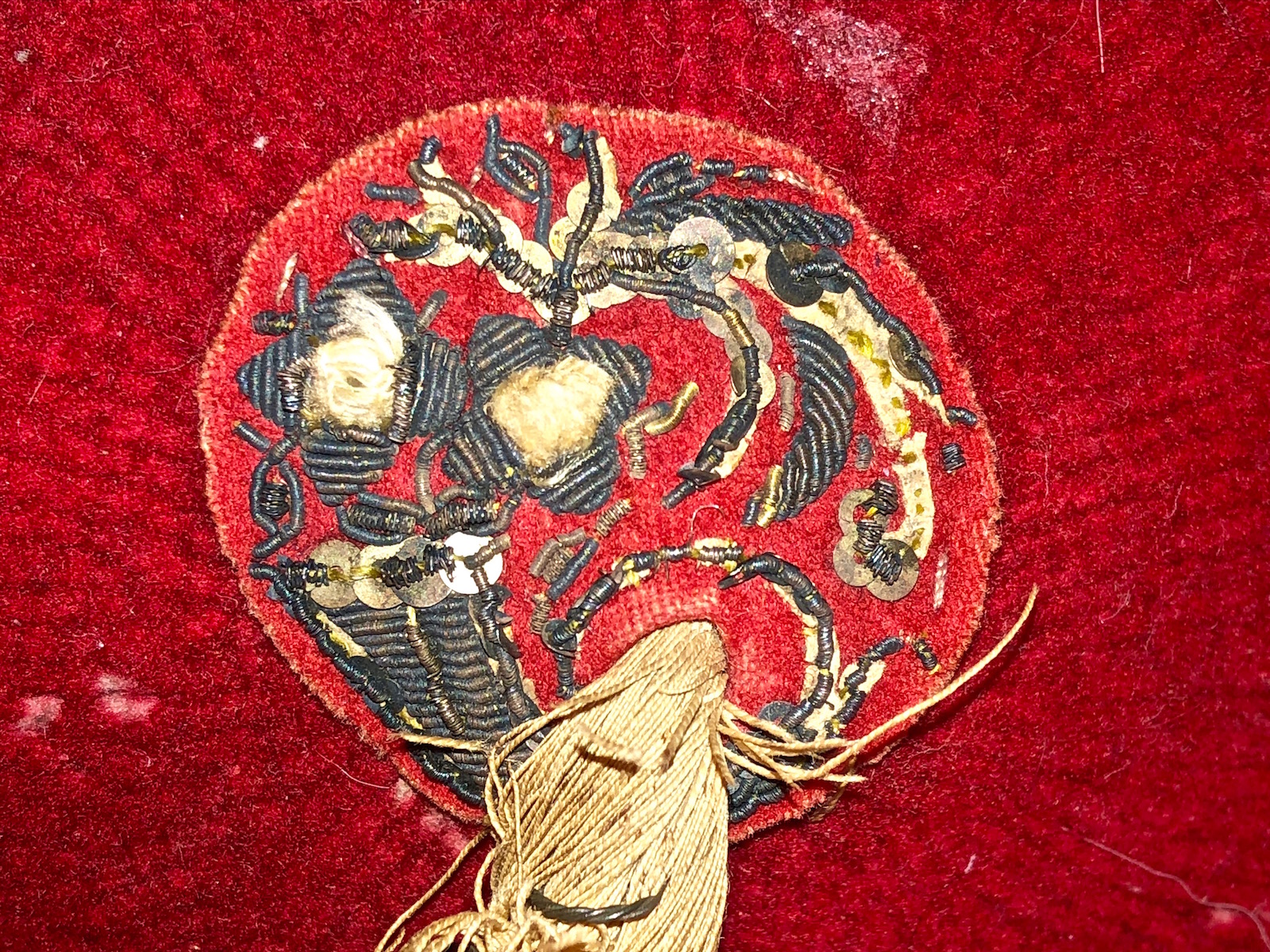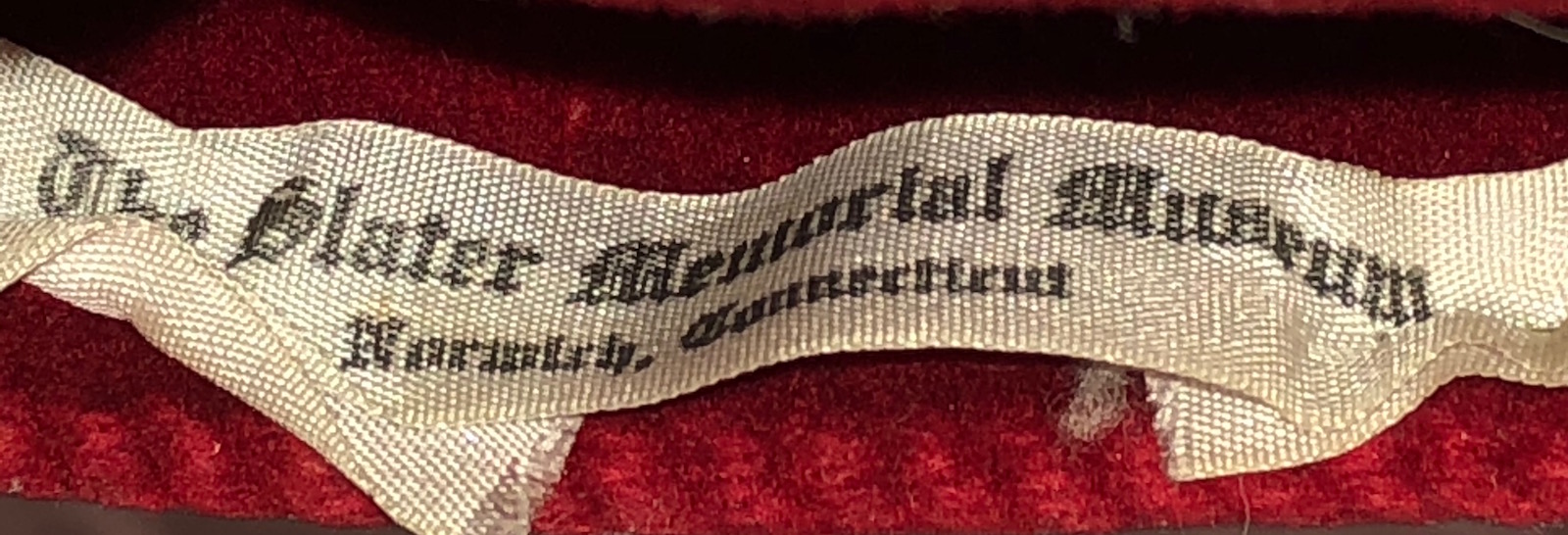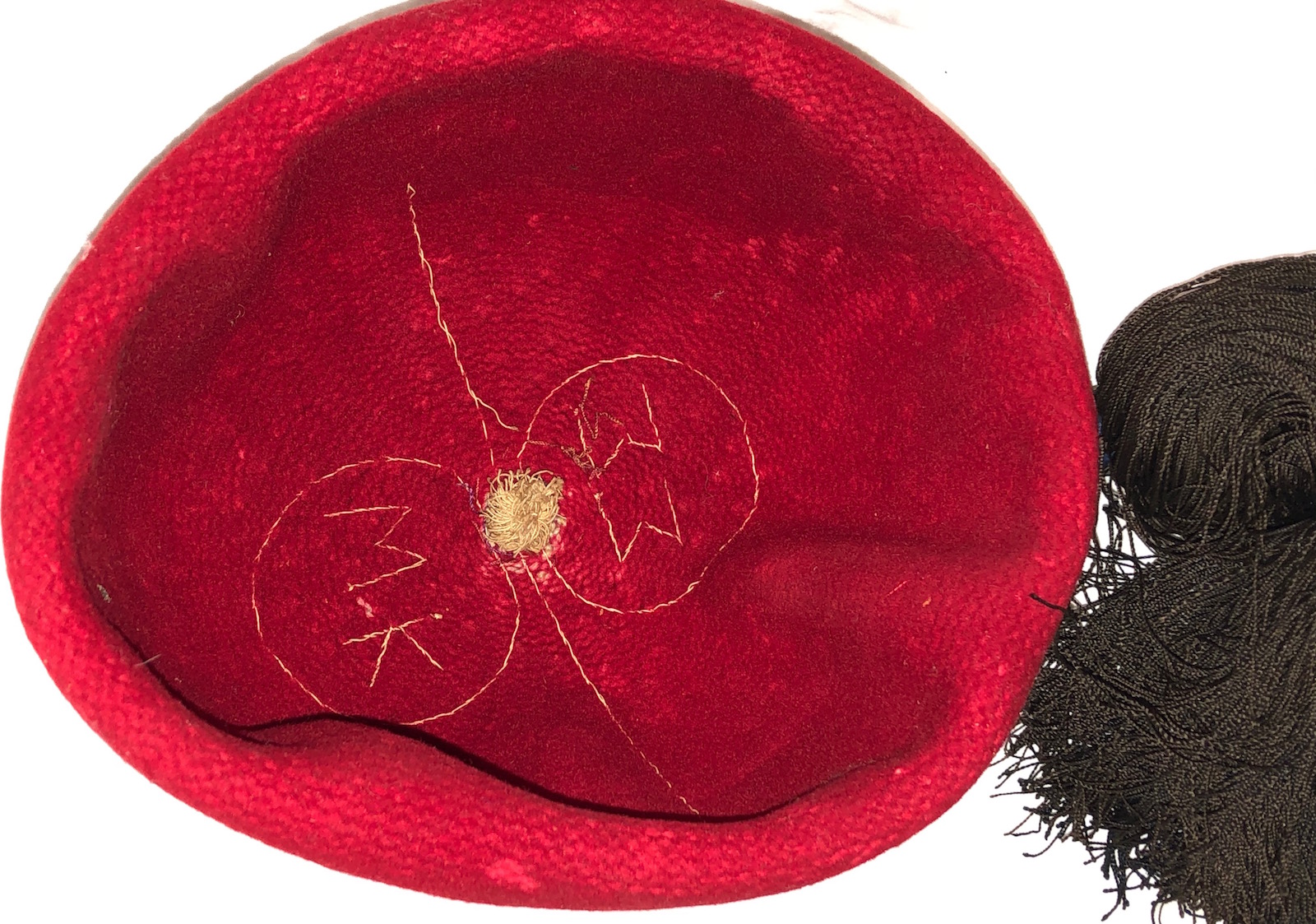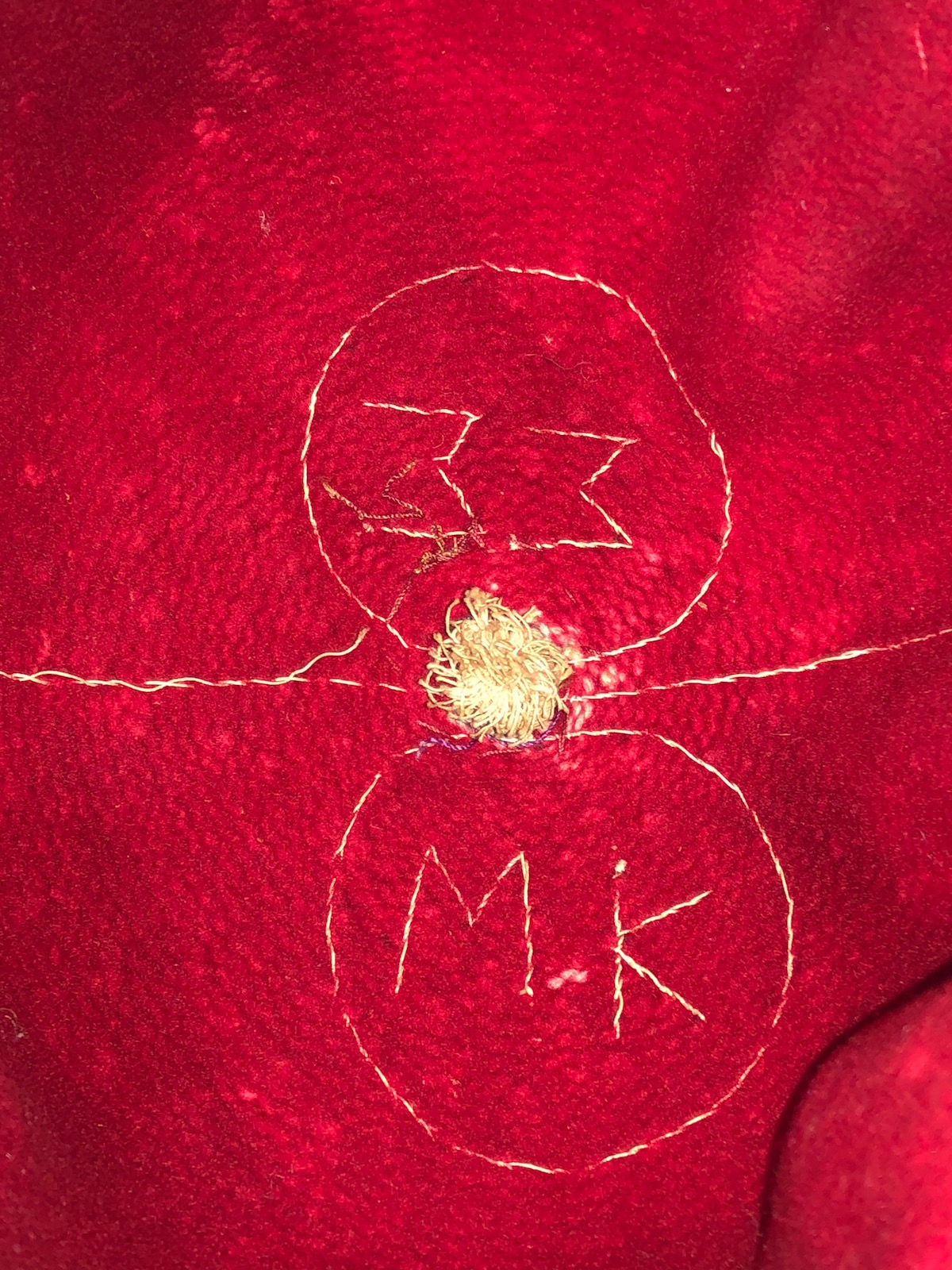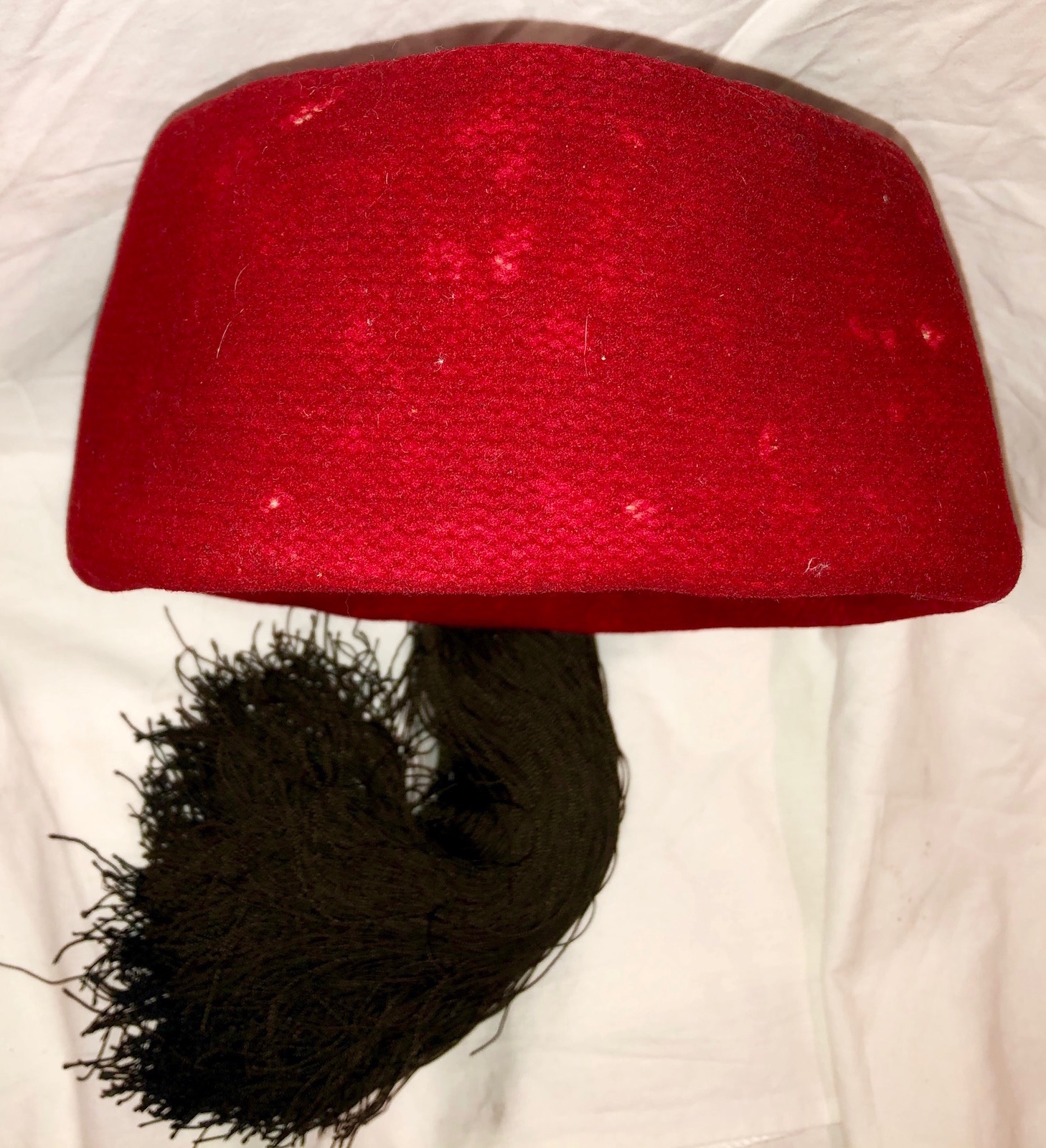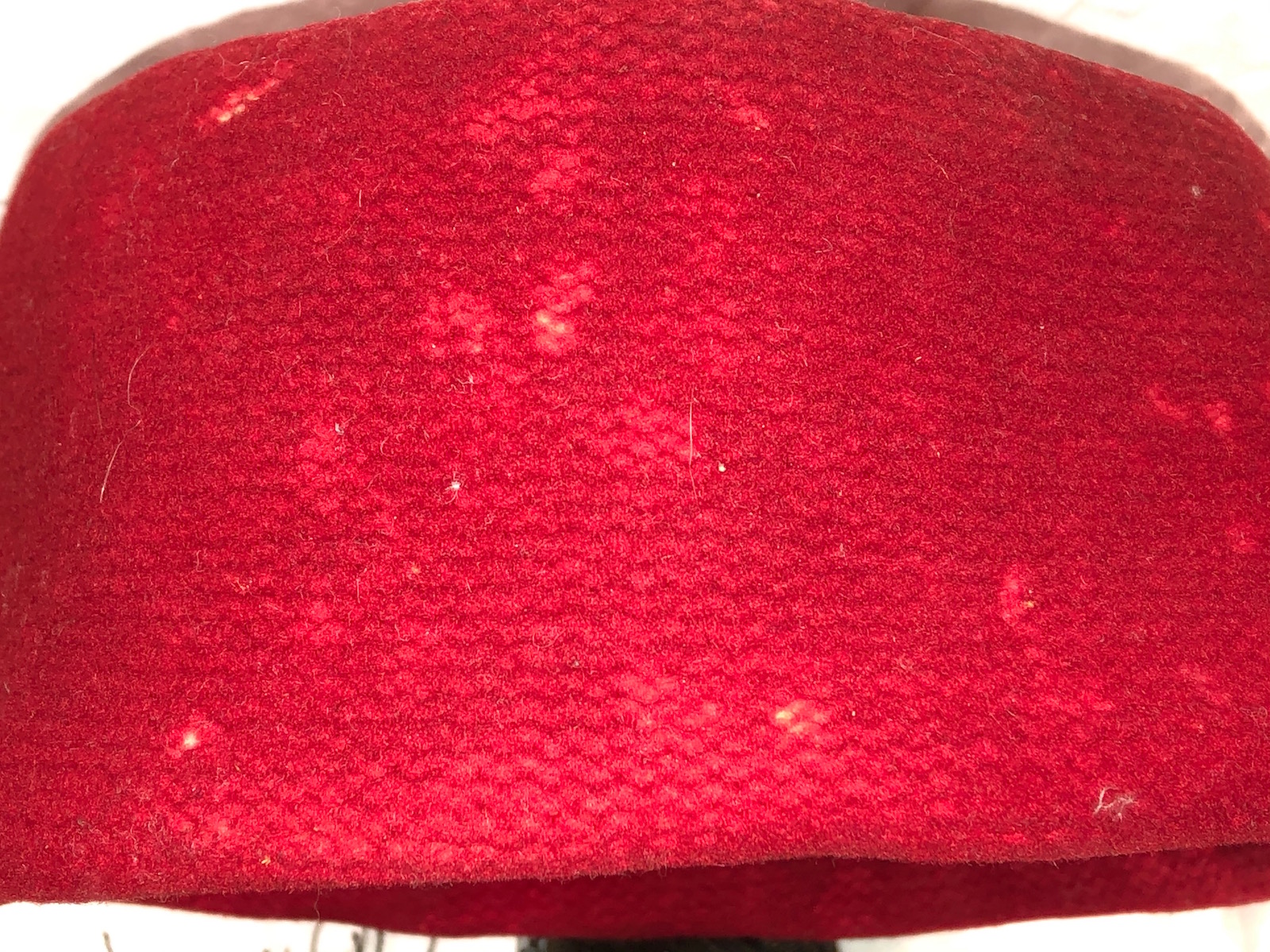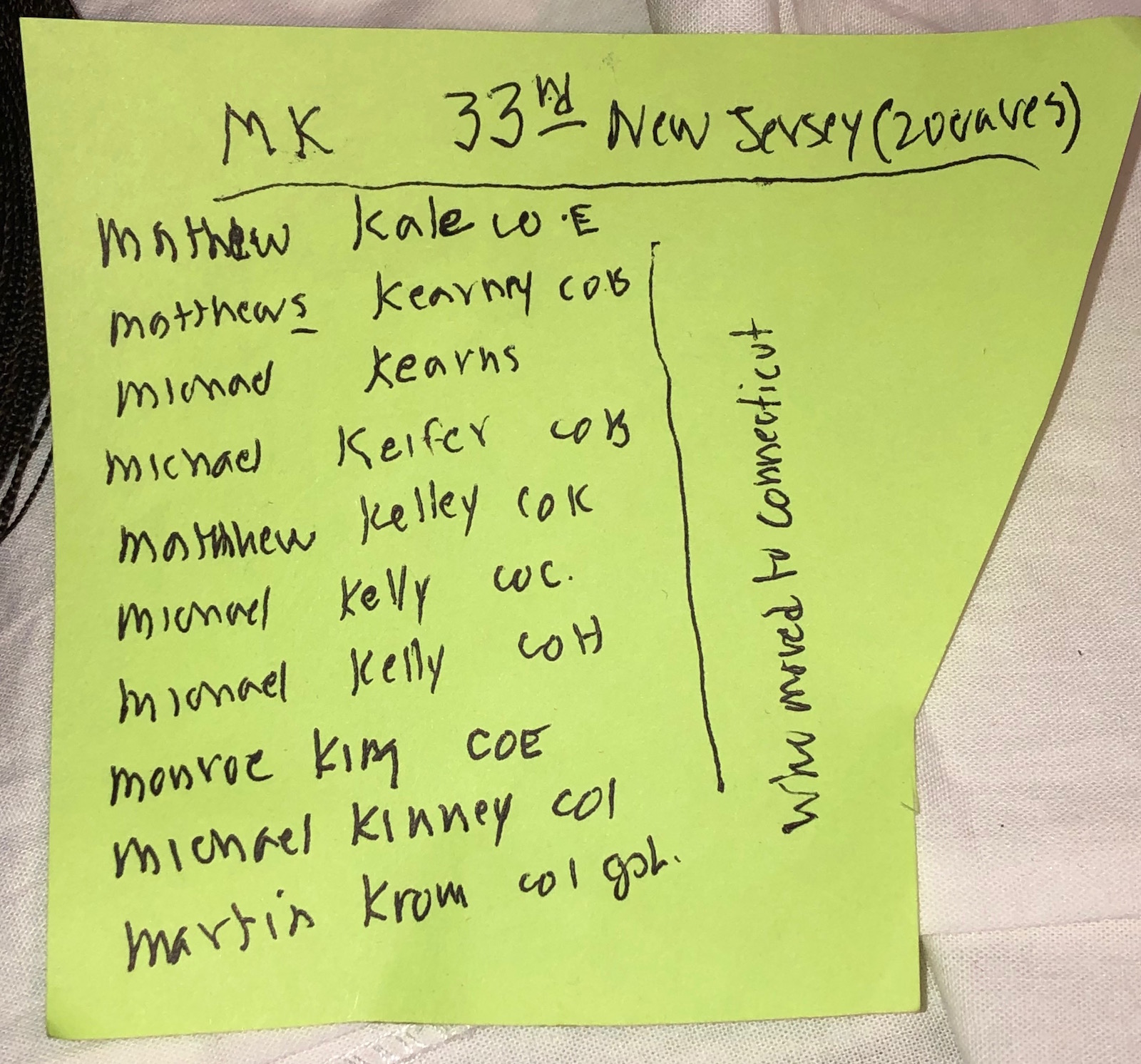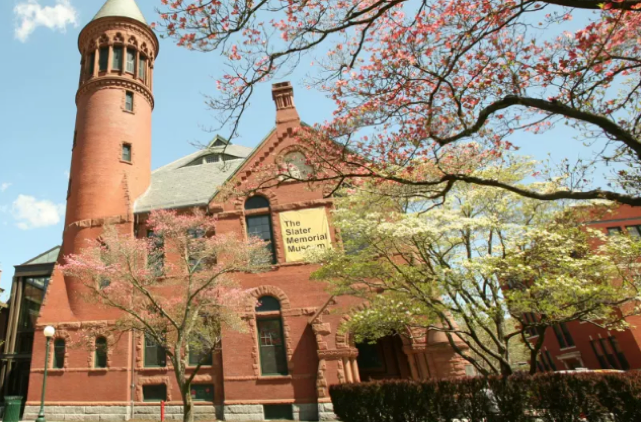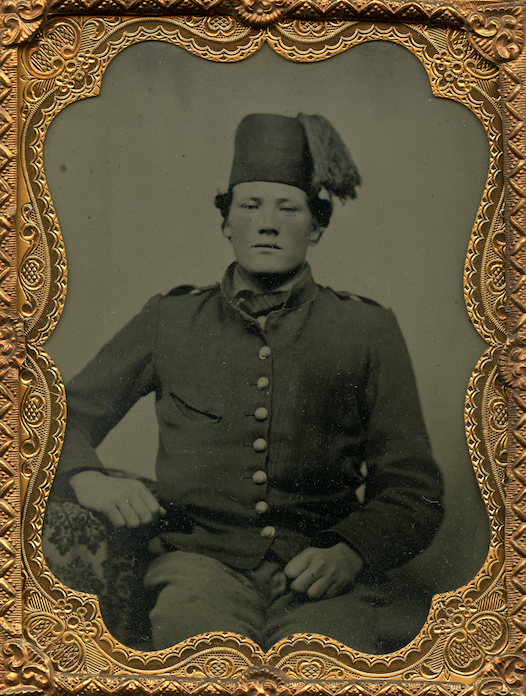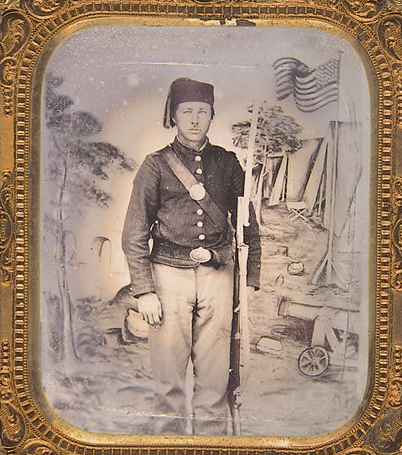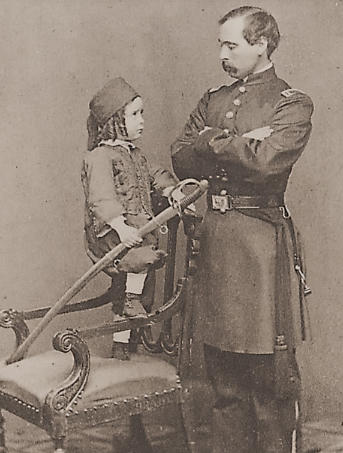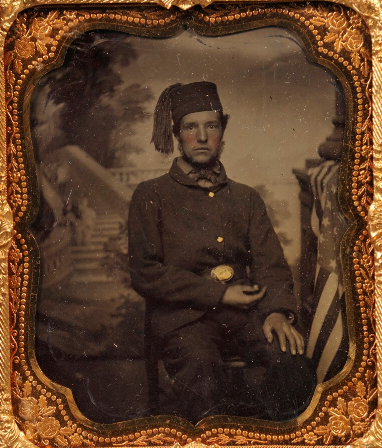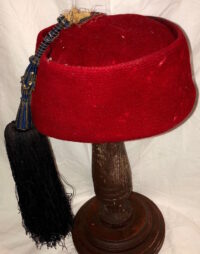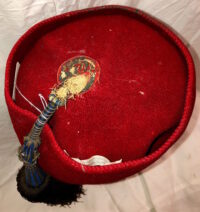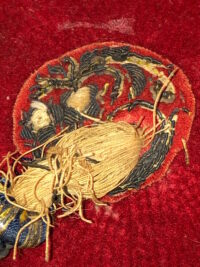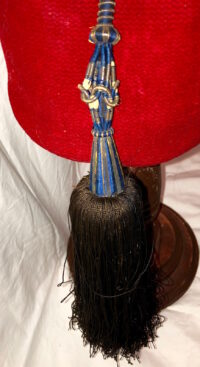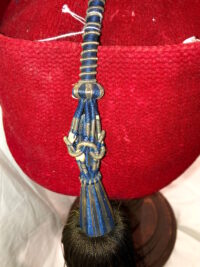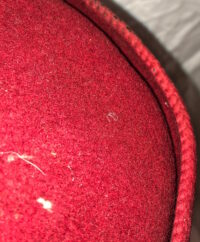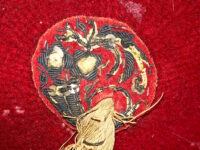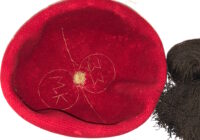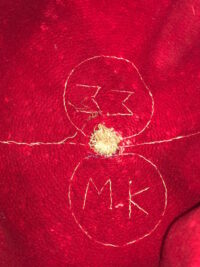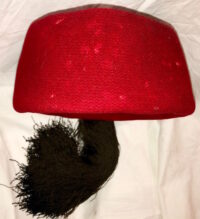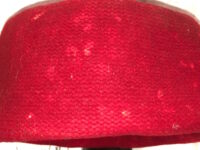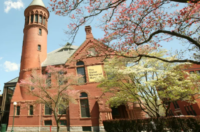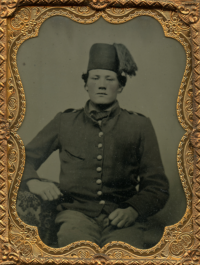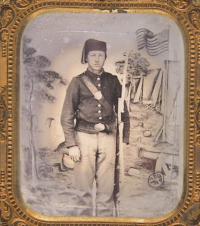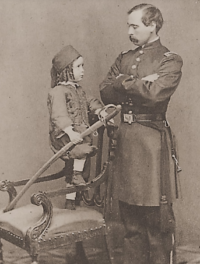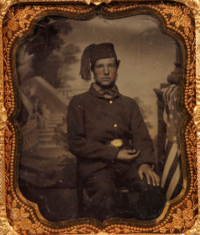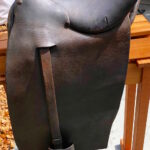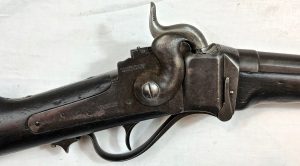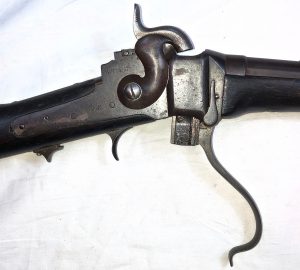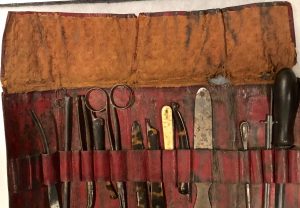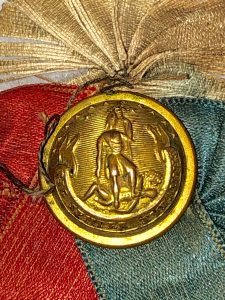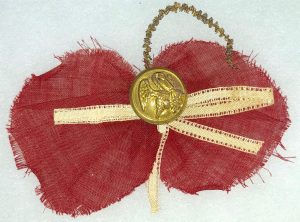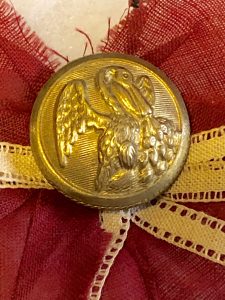Original Civil War Period Zouave Fez
SOLD
Original Civil War Period Zouave Fez – Many years ago, during one of the Brimfield Antiques Market and Fair events, held several times a year, in Brimfield, Massachusetts, a long time (and highly knowledgeable), Civil War collector was “trolling” through the many acres of outdoor sales venues, when he came upon a large grouping of early to mid-19th century clothes being de-accessioned from a small, Connecticut museum, the Slater Memorial Museum (still in existence) in Norwich, to raise funds to purchase new exhibit items. The collector, attending to his “mission” to find undiscovered, Civil War treasures, started reviewing the early clothes, placed by the museum out for sale. He came upon this fez, amongst the other 19th century clothing, and, recognizing its Civil War significance, ascertained the price from the museum representatives, purchased the hat and quickly walked away. This fez has been in that collector’s ownership for all of these years, until we were able to obtain it from him, recently. The hat, still retaining its original museum ownership tag, is constructed of a thick pile, heavy, red woolen, carpet-like material; it is completely hand sewn and remains in excellent condition. Atop the hat is a truly impressive bullion and sequin decorated, red woolen disk, that serves as the “anchor” for an equally decorative, blue and silver corded “tail” or tassel, that ends in a thick extension of a cluster of long, black threading. The interior of the fez is embroidered with the initials – “MK” and the number “33”; we believe that the number possibly represents the regimental number of the 33rd New Jersey Infantry, a Zouave attired unit; the initials are seemingly those of one of the soldiers in this regiment. Unfortunately, there are ten members of the regiment with those initials; we have listed the names of the possible original owner of the fez. This fez is not some kind of masonic cap, nor is it of foreign manufacture; in addition, the thick, heavy red wool and hand stitching are indicative of the cap’s distinct age; the disk from which the cap’s tassel projects, has the same bullion and sequin decorative elements that appear on Civil War officers’ rank straps and insignia. This is a fine, Civil War, Zouave fez, in superb condition.
33rd New Jersey Infantry Regiment
| 33rd New Jersey Infantry Regiment | |
| Active | September 3, 1863 – July 17, 1865 |
| Country | United States |
| Allegiance | Union |
| Branch | Infantry |
| Engagements | Battle of Missionary Ridge Atlanta Campaign Battle of Resaca Battle of Dallas Battle of New Hope Church Battle of Allatoona Battle of Marietta Battle of Kennesaw Mountain Battle of Peachtree Creek Siege of Atlanta Sherman’s March to the Sea Carolinas Campaign Battle of Bentonville |
The 33rd New Jersey Infantry Regiment was an infantry regiment in the Union Army during the American Civil War.
Service
The 33rd New Jersey Infantry Regiment was organized at Newark, New Jersey for three years service and mustered in September 3, 1863 under the command of Colonel George W. Mindil.
The regiment was attached to 1st Brigade, 2nd Division, XI Corps, Army of the Potomac, to October 1863, and Army of the Cumberland to April 1864. 2nd Brigade, 2nd Division, XX Corps, Army of the Cumberland and Army of Georgia, to July 1865.
The 33rd New Jersey Infantry mustered out of service July 17, 1865, at Washington, D.C..
Detailed service
Left New Jersey for Washington, D.C., September 8, 1863, then moved to Warrenton, Va., September 13–19. Movement to Bridgeport, Ala., September 26–30, 1863, then moved to mouth of Battle Creek, October 18, and duty there guarding bridges until November 4. Moved to Lookout Valley, Tenn., November 4–6. Chattanooga-Ringgold Campaign November 23–27. Orchard Knob November 23. Tunnel Hill November 24–25. Missionary Ridge November 25. March to relief of Knoxville November 28 – December 17. Duty in Alabama until May 1864. Atlanta Campaign May 1 – September 8. Demonstration on Rocky Faced Ridge May 8–11. Dug Gap or Mill Creek May 8. Battle of Resaca May 14–15. Near Cassville May 19. Advance on Dallas May 22–25. New Hope Church May 25. Battles about Dallas, New Hope Church, and Allatoona Hills May 26 – June 5. Operations about Marietta and against Kennesaw Mountain June 10 – July 2. Pine Hill June 11–14. Lost Mountain June 15–17. Gilgal or Golgotha Church June 15. Muddy Creek June 17. Noyes Creek June 19. Kolb’s Farm June 22. Assault on Kennesaw June 27. Ruff’s Station, Smyrna Camp Ground, July 4. Chattahoochie River July 5–17. Peachtree Creek July 19–20. Siege of Atlanta July 22 – August 25. Operations at Chattahoochie River Bridge August 26 – September 2. Occupation of Atlanta September 2 – November 15. Expedition to Tuckum’s Cross Roads October 26–29. Near Atlanta November 9. March to the sea November 15 – December 10. Montieth Swamp December 9. Siege of Savannah December 10–21. Carolinas Campaign January to April 1865. Averysboro, N.C., March 16. Battle of Bentonville March 19–21. Occupation of Goldsboro March 24. Advance on Raleigh April 10–14. Smithfield, N.C., April 11. Occupation of Raleigh April 14. Bennett’s House April 26. Surrender of Johnston and his army. March to Washington, D.C., via Richmond, Va., April 29 – May 19. Grand Review of the Armies May 23–24.
Casualties
The regiment lost a total of 163 men during service; 6 officers and 72 enlisted men killed or mortally wounded, 85 enlisted men died of disease.
Commanders
- Colonel George W. Mindil
Notable members
- 1st LieutenantJohn J. Toffey, Company F – Medal of Honor recipient for action at the Battle of Missionary Ridge
Slater Museum
Located on the campus of Norwich Free Academy, the Slater Museum awakens visitors to the richness and diversity of the human experience through art and history. For more than one hundred years, the Museum has displayed and interpreted the best examples of fine and decorative art, representing a broad range of world cultures of the Americas, Asia, Europe and Africa.
Slater Memorial Museum
108 Crescent Street
Norwich, CT 06360
(860) 425-5563
[email protected]
Since 1856, Norwich Free Academy has adhered to the philosophy of its founder to “return to our hamlets and our homes its priceless freight of youthful minds, enriched by learning, developed by a liberal culture, refined by study of all that is beautiful in nature and art, and prepared for the highest usefulness and the purest happiness”
Founder, John P. Gulliver,
NFA Dedication Ceremony (1856)
